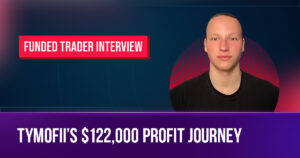One of the most successful forex traders of all time, George Soros, said: “It’s not whether you’re right or wrong, but how much money you make when you’re right and how much you lose when you’re wrong.” In his philosophy, risk management is one of the most important principles that regulate your success in forex trading. Hedging is one of vital risk management strategies you should learn about in forex trading. Let’s explore in this article.
What is Hedging in Forex Trading?
Hedging, in simple terms, is a risk management strategy used to protect against potential losses by taking an offsetting position. It involves making an investment or entering into a financial transaction that reduces the risk of adverse price movements in another investment or transaction.
Just like you might buy insurance for your car to cover accidents. In forex trading, you can use hedging to reduce the risk of losing money when you invest or make financial decisions.
Why Use Hedging Strategies in Forex Trading?
Forex hedging strategies are essential for you as a trader or investor. Here’s why:
- Risk Mitigation: In the world of forex trading, hedging might be your shield against the uncertainties of markets. By employing offsetting trades, you can limit the impact of unfavorable price shifts.
- Volatile Market Conditions: The forex market, with its constant exchange rate fluctuations, can be challenging to navigate. Hedging provides stability during these turbulent times, ensuring your portfolio remains resilient.
- Portfolio Diversification: Hedging is a tool for diversification. By using different currency pairs and hedging techniques, you spread your risk across multiple positions, safeguarding your overall portfolio.
5 Types of Most Common Hedging Strategies
As a forex trader, you must know how to access various hedging strategies to manage your risk effectively. Let’s explore these strategies and how you can use them in your trading:

Spot Contracts
A spot contract is the simplest form of forex hedging. You can buy or sell a currency pair at the current market price, instantly locking in the exchange rate for immediate action.
Example: If you believe the Euro (EUR) will strengthen against the US Dollar (USD) and you want to protect your potential gains, you can enter a spot contract to sell EUR/USD at the current market rate.
Currency Options
Secondly, Currency options give you the choice to buy or sell a currency pair at a specific price within a set timeframe. You can use currency options as a safeguard against unfavorable currency shifts while still capitalizing on advantageous ones.
Example: Say you have a portfolio of currency pairs, and you’re worried about a sudden market downturn affecting your GBP/USD position. To protect yourself, you buy a currency put option on GBP/USD. This option gives you the right to sell GBP/USD at a fixed price, safeguarding your portfolio from potential losses.
Forex Futures
Third, forex futures contracts are standardized agreements to buy or sell a currency pair at a specified price on a later date. Futures contracts help you hedge against potential losses due to unfavorable currency fluctuations.
Example: You anticipate that the USD will strengthen in the coming months, affecting your long EUR/USD positions. To hedge against this, you enter into a forex futures contract to sell EUR/USD at a predetermined price for a future date. If your prediction is correct, the futures contract offsets any losses in your EUR/USD position.
Cross Currency Hedging
This strategy involves taking positions in two or more currency pairs that have a strong negative correlation. By doing so, traders aim to offset potential losses in one currency pair with gains in another.
Example: You think the USD is headed for a fall, so you buy EUR/USD (going long) while simultaneously selling USD/CHF (going short). This way, if the USD depreciates, your EUR/USD position may profit while your USD/CHF position acts as a hedge.

Multiple Position Hedging
Finally, by using this strategy, you open multiple positions in different currency pairs to diversify your risk. If one trade goes south, others may compensate with gains, helping you minimize overall risk.
Example: Your trading portfolio includes EUR/USD, GBP/USD, and USD/JPY positions. To reduce risk, you diversify by opening these different positions. If one pair experiences losses due to unexpected market events, other positions may help balance out the overall performance.
These strategies serve as valuable instruments, providing you with the means to safeguard your investments and confidently navigate the dynamic forex landscape.
Applying Hedging Knowledge Now!
Get fundedHow to Hedge in Forex?
Hedging in forex trading means safeguarding yourself from potential market volatility-induced losses by balancing your existing positions. Here’s your 6-step guide:
- Identify Your Position: Determine which currency pair you currently hold (long or short).
- Correlation Understanding: Study currency pair correlations; pairs with strong negative correlations can be effective hedges.
- Select a Strategy: Choose a strategy that suits your risk tolerance and goals, like direct hedging, multiple pairs, forex options, currency correlation, or forex futures.
- Take an Opposing Position: Depending on your strategy, open a position opposing your current trade (e.g., go short on a negatively correlated pair if you’re long).
- Monitor Your Positions: Keep watch over both your original and hedging positions; your hedge should limit losses if the market turns against you.
- Adjust as Needed: Be ready to adapt your positions and strategies to changing market conditions.
Leveraging Your Hedging Strategies with Our Capital
Having a substantial capital in forex trading offers distinct advantages. With ample funds, you can diversify across currency pairs, spreading risk from a single trade. Flexibility increases, enabling the use of sophisticated hedging strategies and financial instruments. Transaction costs also become manageable with larger capital, optimizing your hedging approach.
Ready to elevate your forex trading game?
If you’re looking for an opportunity to leverage a substantial capital base. True Forex Funds further amplifies this advantage by offering traders up to $400,000 in capital and a chance to earn 80% of profits after passing the One Phase or Two Phase Evaluation.
Additionally, trusted prop firms, including True Forex Funds, employ hedging techniques themselves, allowing them to protect the capital and limit potential losses effectively.




